Draining an inground swimming pool is not difficult, it’s just stressful. Pool owners worry about the pool popping out of the ground, or other major damage they’ve heard tales about. A concrete pool that “floats” or pops out of the ground is an extremely rare event. Most of them occur during major flooding events or hurricanes. Chances are, it won’t be you, but just to be sure, you’ve got to be careful. Here’s how to safely drain an inground pool and prevent a popped pool.
How to Prevent a Popped Pool
80% of the weight of a pool is water (8 lbs per gallon) and when full, an average inground pool can weigh 250,000 lbs! This is sufficient to hold back most hydrostatic pressure, or the pressure of underground water. Here are a few tips for preventing a popped pool.
1. Don’t drain the pool during extended periods of heavy rain.
Depending on the topography surrounding the pool, a few hours of heavy rains could come to rest under the pool shell. This pressure, coupled with an empty pool, will result in the pool popping out of the ground.
2. Pump the discharge to a storm drain, or to a point far away from the pool.
If your discharge hose is not long enough, the water you pump out of the pool can come up under the pool, with immense pressure.
3. Pump downhill from the pool.
Survey the topography or terrain around the pool. Choose a discharge location where the water will continue to run away from the pool, and not collect in one area. If there are no downhill areas to pump towards, use more discharge hose, and move the hose often to prevent saturation and erosion.
4. Open the hydrostatic pressure relief plugs on the pool floor.
This is done when the pool is mostly drained out. Walk carefully down the center of the pool floor, and you should see the plastic plugs set into the plaster. Use a hammer and chisel to break out the plaster inside the cap, and then use large, straight pliers to twist out the threaded plug.
Many pools have several hydrostatic plugs in the pool floor. I will usually remove the one in the dead center of the pool floor, leaving the shallow floor area hydrostatic plugs intact. If I feel that a particular pool could be risky, then I will also remove the main drain cover immediately after draining, and remove the hydrostatic cap in the bottom of the main drain pot. On some pools, you will find this plug to be glued in place, if so open up one of the plugs in the deep end floor.
5. Work quickly.
With a couple of hydrostatic relief plugs opened up, you can rest easy, but inground pools should not be left empty for extended periods of time. It’s bad for the pool plaster (or vinyl liner) to be exposed to too much sun and dry air. If you are making repairs, have all supplies, materials, contractors or helpers ready to go before you drain the pool, to start refilling the pool within one week or less. All of this will help prevent a popped pool.

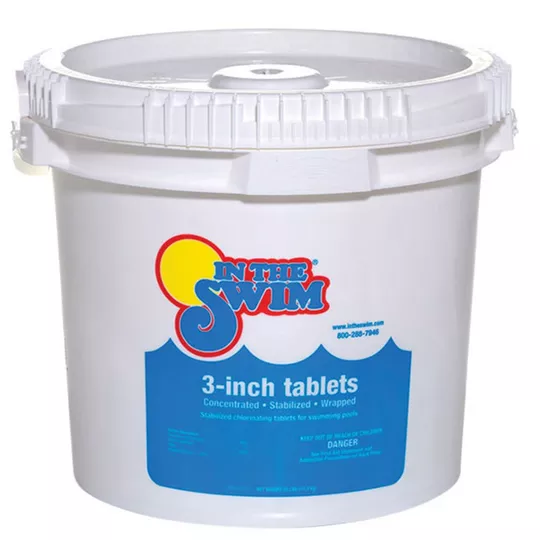
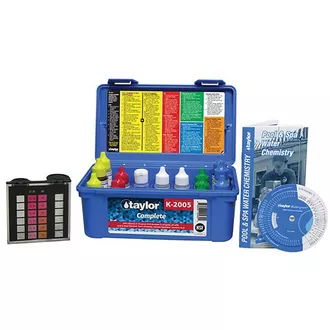
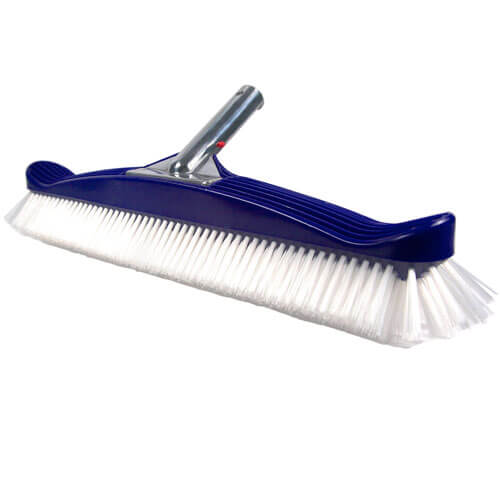

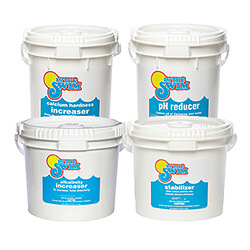

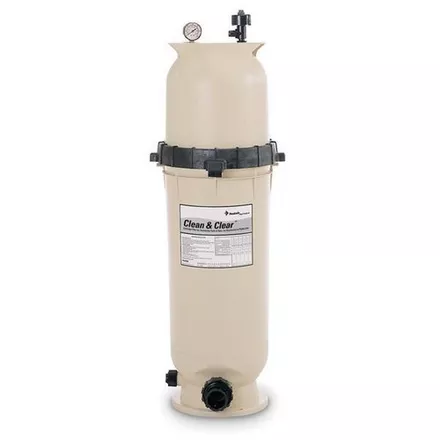
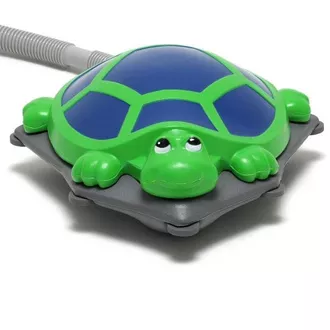
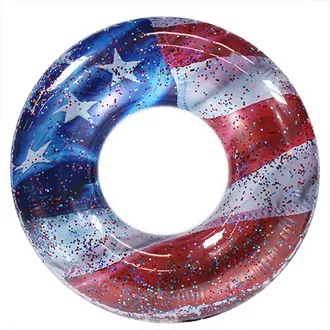

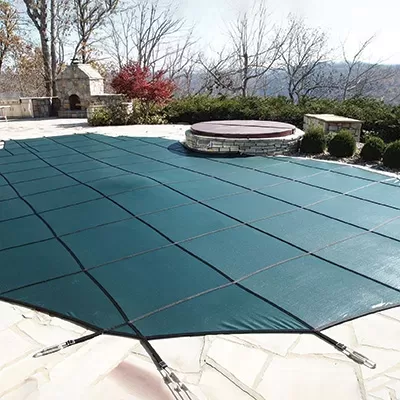
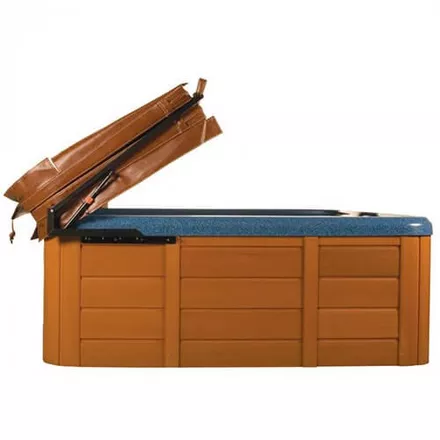

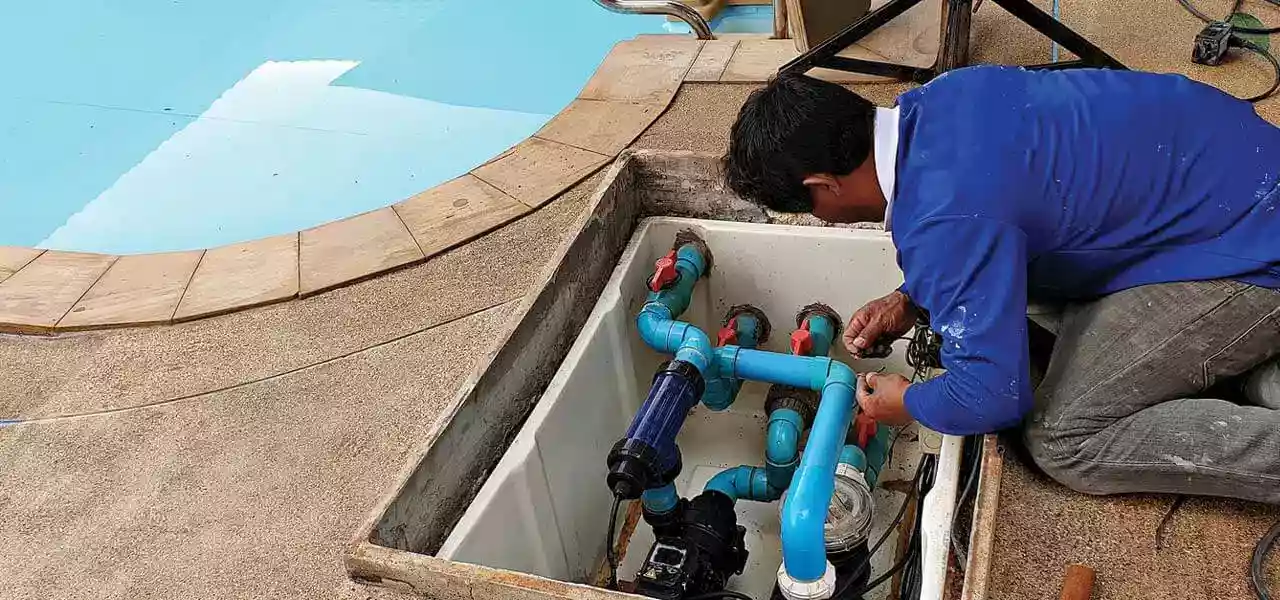
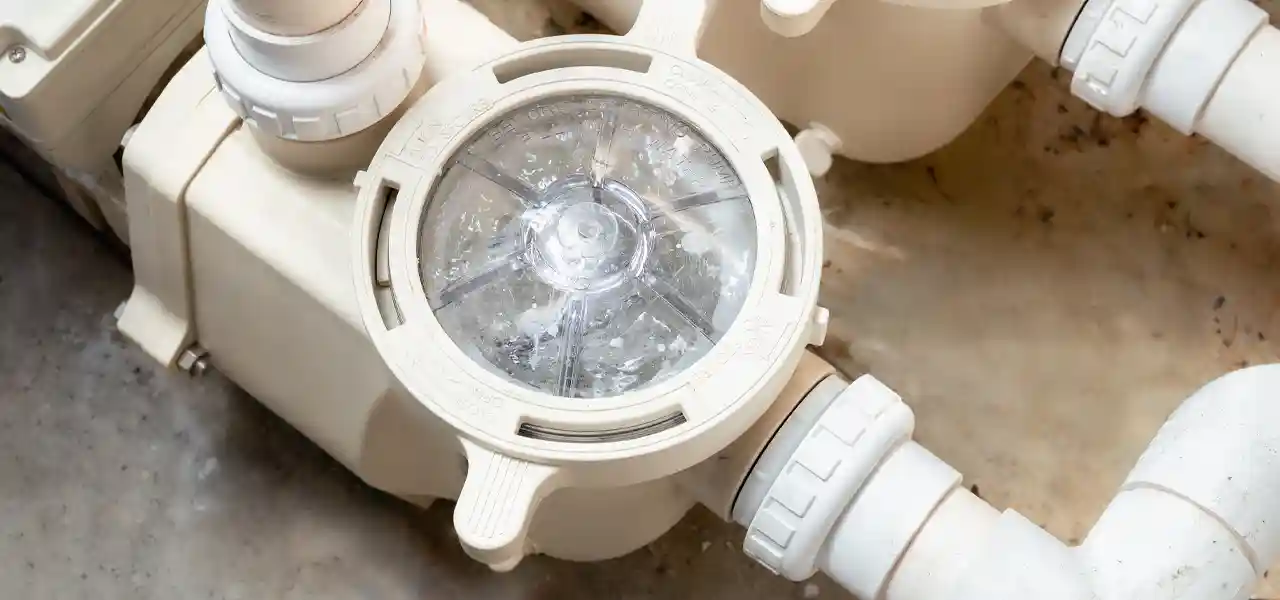
Hi,
I need to drain our pool to redo the diamond bright and add new tile. We live on the intracoastal waterway and I’m afraid the pressure from the high tides will pop our pool. Is this something I should be worried about and what can I do to prevent it?
Lou, yes you may have to be careful. Open the floor hydrostats, as described in the article, and you can relieve the ground pressure, into the pool.
Hello! We have an inground concrete pool that we are getting ready to drain and refinish. We have 2 hysrostat plugs. One under the main drain cover and one high on the deep end wall (above the water line). We have been told that we should pump water out of the plug that is high on the wall before we drain the pool and open the bottom plug. What kind of pump would we used to do that? It is a small plug, maybe 2.5″ across the threaded part.
Hi Sara, I have not heard of this ‘high on the wall’ type of plug before. Must be an Ohio thing, lol. Not sure what kind of pump would connect to that, but the threads are likely 1.5″ or 2″. A regular inground pool pump with two hose fittings, secured with Teflon tape, and a sturdy suction hose could work. Prime the pump with water and connect a 115V plug (convert motor voltage to 115V first), then plug-in and see if it will draw water…?
I need to drain my gunite pool to repair. Rebar stain in the 3 foot end. This will leave very little water in the 5 foot end. I was thinking of putting clean plastic rubbish barrels in the pool and filling them with some of the pumped out water to BB mss as me the pool heavier so it doesn’t pop out. But I was wondering if it would cause damage to the walls of the pool I am having this done next week if u void call me I would be grateful Jack 978 265 1720 or zipsicecream@gmail.com thanks
Hello Jack, yes you can use the barrels in the pool. I don’t think they will damage the pool, but could leave plastic marks if they are dragged on the surface. You can also search for the hydrostatic caps in the shallow end floor, chip out the plaster from the inside of the cap and use straight pliers to open. They are usually in the center of the floor, white plastic looks like a circle with a line thru it. Replacement caps are Hayward SP1022B, as they sometimes get mangled when removing them.
I had to partially drain my pool about 40% to lower cyanuric acid levels. I then immediately filled it back up with fresh water, took about 9 hours to fill back up. I didn’t realize popping could be a problem with gunnite pools. Can a partially drained pool that is then immediately filled have any chance of popping? I can’t see any caps around the pool floor, maybe the pebbletech was put over it. And I don’t know if I have a hydrostatic valve. The land is mainly clay, very solid.
a 40% drain is no problem, you would have to be 90%+ in most cases. For a pool to pop, there also must be a high water table that has nowhere to go, due to topographical depression or rock/shale walls underground, or just very flat, at sea level. Expansive soil or saturated soil is another requirement. And usually a 100-year rain event or hurricane or flooding is also needed. A concrete pool is very heavy, maybe around 25,000 lbs, but filled with water and it can weigh 150,000 lbs. This keeps it in the ground, the water weight. One day you will need to drain the pool completely, for repairs or resurfacing. If you hire a company, they will assume the risk. But the risk is very small. Maybe one pool out of a million, each year, would be my guess, or about 8 pools per year, nationwide…? That’s my guess.
Greetings. My 2 year old rectangle concrete pool in Houston, Tx has started shifting over the past 3 or so months. There was no noticeable movement for the prior 20 months. The water level has dropped around 1 to 1.5 inches (and thus the pool has risen) along one length. It seems that the level is rising and falling slightly, but never back to level as we move between prolonged dry and wet spells. Pool installer has commenced evaluating. No cracks and no leaks. Pool co’s initial suspicion is that 2ft wide run of artificial turf running adjacent to the raised length of the pool has no drainage and that the rain water landing on that turf is running down pool wall and causing that side of pool to rise due to hydrostatic pressure. However, it seems like this suspicion is based on guessing rather than any deep inspection. There has been no excavation or other form of evaluating what is actually happening under the ground or behind the pool. Couple of questions for you:
1) What is proper way to investigate and determine cause of the pool shifting?
2) Would it make sense that rain-fall on this relatively small path of turf could create sufficent hydrostatic pressure to lift (and do so ununiformly a 20k gallon pool?
3) If this is the cause and drainage were used to prevent further water from reaching in, would it be possible for pool to settle back to level after undergorund completely dries?
4) If pool never re-levels, what techniques would be needed to re-level the pool?
Conor, sounds like a tough situation, my empathy to you. I am not an expert in this area, so my first advice would be to consult with an engineering firm in your area, that can lean on soil, mechanical and construction engineers to determine the cause with certainty. My suspicion is not that one side has raised, but that the opposite side has sunken. Consider that the pool, as a whole is tilted, not just one side lifted up. This could be from pressure on one side, or subsidence on the opposite side. Pools weigh a lot, so if fill dirt was used, and gravel, they can compact and settle, even if just on one side. And, there are expansive soils that can expand with moisture, perhaps with enough pressure to lift a pool, and a high water table, with no escape for the water, can also create immense pressure. I am sure that there must be an answer, and a solution to relieve the pressure or the tilting, or subsidence that is causing the problem. Contact a large engineering firm in town, they should be able to give a solid answer for … $1000? And then, your builder will owe you a repair, in my opinion, or work with you for a highly discounted solution – if not, you are certainly within your right to have another builder fix it, and then take them to small claims court to have them reimburse you. PS – I don’t think that the water is causing the problem, and even if it was, they should have foreseen a problem during construction. They are supposed to be knowledgeable in building pools in the Houston area.
My concrete swimming pool pop out above the ground can it will be fix or we have to filling up with dirt or if we fix how much does it cost estimated please
Hi Vinh, If the shell of the pool is not severely cracked, and the tile and coping is mostly in good shape, then it may not cost too much. It would be hard to estimate, but the one thing that definitely needs fixing is reconnecting the broken plumbing. Some pools may pop out on only one end, requiring only some plumbing repair. This would involve removing some of the deck, and and reattaching the plumbing where it was broken. However, in most cases, dirt has washed under the pool, making it hard for the pool to settle back into place easily. Very few people have experience in fixing a popped pool, and I am among those, I’ve never even seen one, except in photos. I would guess that $20,000 would be an average
We want to convert our in ground pool to a deck without removing it. We live in San Diego. I found online a company that specializes in that type of work, but it does not operate outside of Arizona. We would like to be sure the work is done by a competent contractor who has done this type of conversion before. My google searches find lots of local landscapers, but no one who has done such a project before. Any referrals? Suggestions? Advice? Options? Thanks.
Hi Rhoda, I’ve seen that done before, it was a large 20×50 inground pool that for safety reasons on a home for sale, someone built a very strong wooden deck over the pool (shoulda just put on a safety cover!), but it was just a regular wood deck, built by a regular deck company. Very sturdy, with pressure treated wood. When the house was sold, they ripped the deck off of course. So, what I’m saying is that I think you just need a deck contractor, not any type of specialist.
Hello
I live in Florida 20ft above sea level I recently purchased a hose with a pool neighbors told me that the pool has 25+ years old +20k gallons, looks like it has previous resurface and seems like the cover the bottom main drainage, the suction is through the skimmer everything is very weird. do I need make a new main drain? Im planning DIY using those pool paints !
I need advice…
Thanks in advance
Hi Owen, I’m not understanding the question very well, sounds like the main drain is tied into the skimmer? Not unusual, it’s a less expensive way to plumb a pool.
Hi Davy,
I have an old vinyl pool that I need to replace the line. it has torn in areas almost have the way down. I also need to replace all of the equipment and don t have the funds at this time. I have left it alone and most of the water has evaporated. It has less than 1 ft of water in the shallow end. Is it a problem leaving it like this, should I put more water in it? Can I leave it empty?
With a vinyl pool, the concern is not a popped pool, but a high water table can damage the floor, especially if sand or vermiculite floor. Or the walls could cave in. Probably neither will happen, but both are possible. It may be best to add water up to the level of the rips in the vinyl.
I’ve emptied my in ground pool and I don’t see any Hydrostatic Anywhere in my pool the only place I see is the main Drain in the deep end what do I do I’m getting ready to resurface it it’s been empty for about A wee now I don’t want it to pop out
Hi, it could be that other hydrostats were plastered over. In such case, just open up the cap in the main drain, if not done already. That will usually be sufficient. Popped pools are very rare, it takes a high water table, heavy rains and an empty pool located in a topographical depression. So don’t worry yourself too much! 🙂
My inground (concrete/Plaster) pool has “popped out” I have no idea where to get an estimate to repair or remove/cover the pool Please help
OH MY! That is bad news, I’m sorry to hear Eve. A concrete pool builder would be the first ones to call. It may be possible to save the pool, and get it to settle again, or adjust the surroundings to level, to prevent a complete loss to the pool. An engineering company may also be of help.
My pool has popped out of the ground as well. Eve, what did you end up doing? We don’t know what to do. House insurance will not cover. We are devastated.
Hello, my inground pool( concrete plaster) has been left empty for over a month due to the renovation/ paint/pump/heater etc and pool guy is not coming back until 2 mire weeks what should I do? Add water so it doesn’t pop?
Not if he’s coming back in a few weeks, but I would make sure that the hydrostat caps are open in the pool. These are threaded plugs, SP1022B is the part number, they are plastered in the center of the floor, and usually two in the deep end. Use a chisel or sharp flathead and chisel the plaster from around the top to the edge, and from inside the circle rim. Then grab it firmly with strong Pliers and turn CCW to remove. Take out one in the deep end and one in the middle, another one if the pool is big
My pool had been empty for few years now due to leakage …not able to fix it due to lack of budget…now some of my pool walls are cracking… pls. help me what kind of repair is needed.How much will I spend to have it fix ? Thank you…
Hi Evelyn, it’s hard for me to advise without pictures and more information, but I will try… Plaster (concrete) pools that are left empty can dry-out and the plaster can begin to delaminate or separate, and fall-off or pop-off in chunks. Cracks may also appear, which may be superficial, or just on the surface, or if there has been significant water pressure or shifting soils beneath the pool, a pool can crack thru the shell. Repairs will depend on what is necessary for structural soundness and what is desired for aesthetics. The plaster coating is the waterproofing for a pool, and should be replaced if missing. Plaster patching can be done, to repair in spots with EZ Patch 1, our plaster mix for small DIY jobs, at a cost of under $50. Replastering the entire pool, if necessary, can cost $4000 or more, depending on size and options (additives or colors) chosen. Crack repair, if they are thru the shell of the pool, can be repaired, possibly in the $100 per foot range. And then you will need to fix the leaking problem you mentioned, which may be a very simple repair, or could require extensive plumbing work. You could also fill-in the pool, as much as that pains me to suggest. This is not cheap either however, as the floor needs to be broken up, so the ground can percolate, and 10-15 truckloads of dirt brought in and tamped down. This can cost $5-10K, depending on the size of the pool, and local requirements.
How do I cure the chalking of my fiberglass pool
Hi, Chalking, which is where the surface color rubs off (like chalk) onto hands and feet, is normally a problem with Painted pools, so I assume that your fiberglass pool has been painted. To reduce chalking on a painted pool, water balance is the solution. Proper levels of calcium hardness, pH and alkalinity. Specifically, when these levels get low, chalking begins. Strive for CH of 180-220 ppm, pH of 7.4-7.6, and alkalinity of 90-110 ppm, and the problem should begin to reverse. Brush the pool twice per week also, to help remove already chalking surface paint.